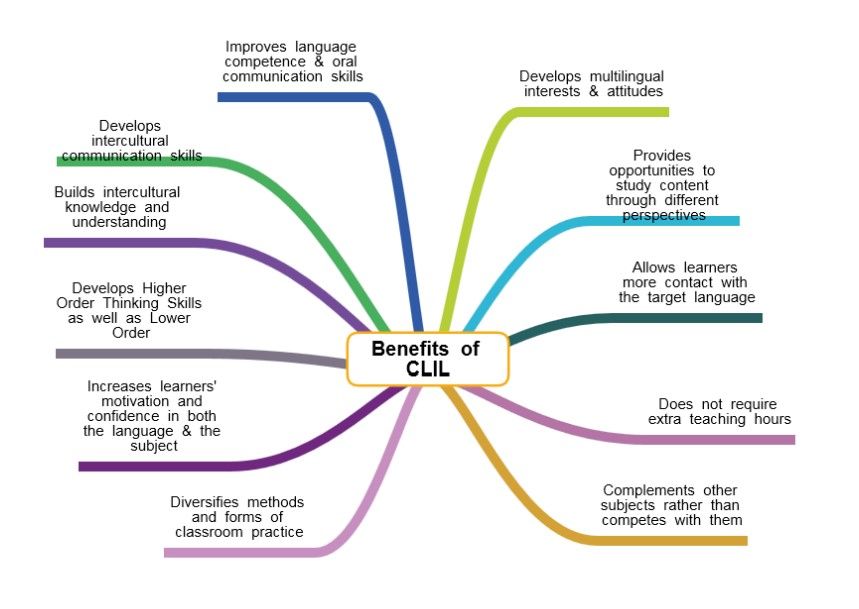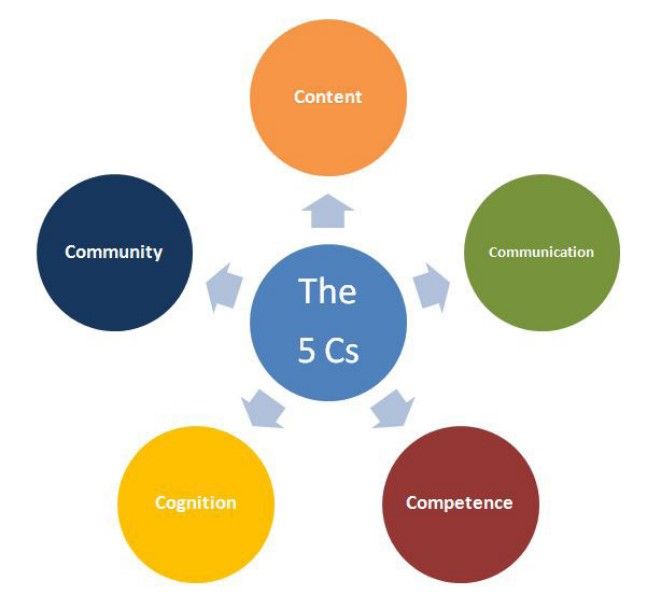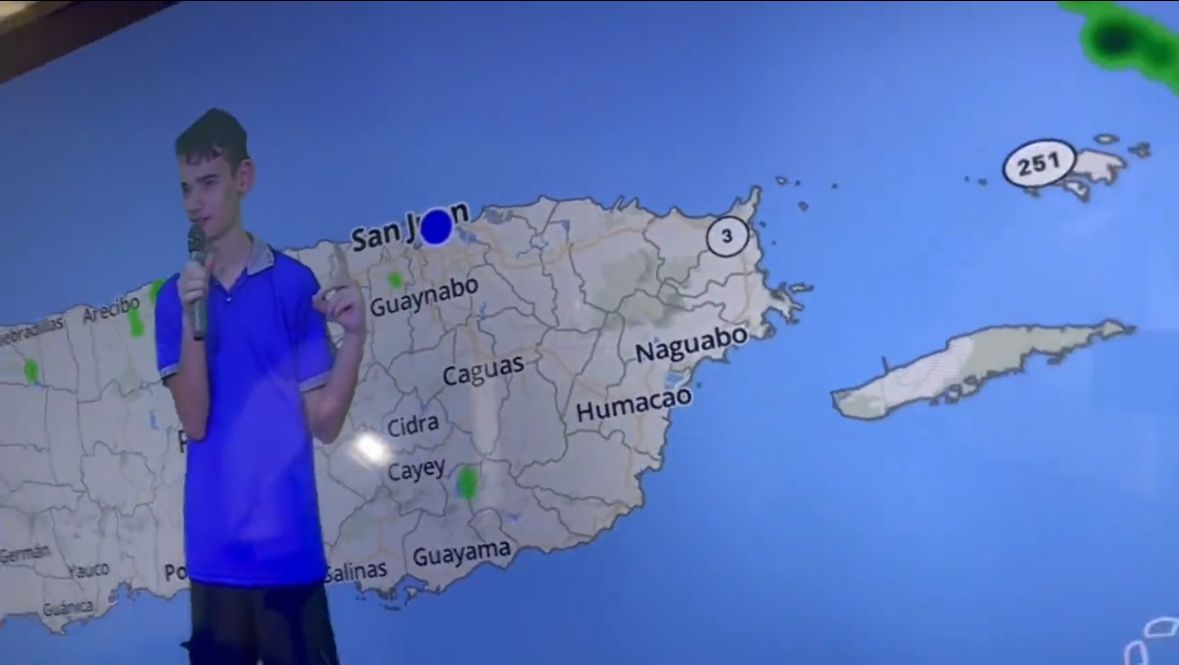@Ana_moderator, thank you
I am sharing my experience when I introduced CLIC methodology in my teaching. I implemented a project called "Show Me My Country" about Armenia and asked my students to explore the architecture, cuisine, culture, customs, and traditions of the country with web resources and collect the information, and represent them to their peers. As it was a familiar topic and they knew a lot about our native country they could get resources and content very easily. The most exciting thing for them was to represent their works in English and they did it with great enthusiasm as they were speaking about their favorite places, dishes, cultural events, and traditions. As they mentioned they felt like
being tourists in their own country and this kind of experience gave them the confidence to be a tour guide in summer in their local area. This kind of project helped them enlarge their vocabulary, and improve their digital literacy, cultural competence and their communication skills.
Here is the link to the final product of the project.
"Show Me My Country" e-book
-
Content and Language Integrated Learning
-
Hello @Tabassumlaghari, thank you for your response, all you mentioned above is what learners relate to while learning different subjects, foreign languages, and navigating social media. When I researched CLIC I found that my students are mostly interested in traveling and when we had a tour of our neighboring country Georgia I asked them to collect their postcards and photos on a Padlet board and share it with their Georgian friends. Here is the educational material they created which is highly used by Georgian students as well.
-
@Adel-8d693e36c4 thank you for your comment. We have a new concept of teaching in our country (Armenia) and our curriculum is structured on competency-based learning. It means that our objectives for teaching are mainly concentrated on forming and developing different competencies and skills and all the tasks are designed to foster the analytical thinking and creativity of the students. The teachers are mostly guiding the students and they are doing lots of things on their own or with groups. We experimented with Student-Centered Inquiry a few years ago and found it very productive. Learners get the instructions and they find- investigate, discuss, analyze, reflect, and create and the teacher assesses them with rubrics and questions about their social-emotional state. There were also cases when teachers were involved in the learning process as well and as a result, with the help of the students, they improved their ICT and media skills.
-
Dear @Ana_moderator, I would like to share another experience I had lately with my students. It was a lesson on Social Study (in Armenian) and I was invited as an expert in Media Literacy. The topic of the lesson was Hate Speech and the students discussed social media and cyberbullying. To my surprise, all the materials they used were in English. They were speaking about their favorite TikTok stars, the issues teenagers get through Social media, and digital citizenship and footprints. They also introduced the vocabulary of unknown words and expressions of the video to the class and after watching the video they discussed all the key points and had a short debate about posting personal life on social media.
Here is the video link >>> and the activities they had during the lesson.
Brainstorming/Mind-mapping about trends, mobile applications
Group work: Discussion (online edutainment, addiction, time management)
Observation (video, content analysis)
Pair Work: Writing ( media messages (hobbies (real life and virtual), target group, influencers, digital footprints, hate speech, support systems, trends and memes)
Debate: My Digital Footprint
Hometask: Create an educating video about Digital footprints in TikTok -
One of the favorite topics my students and I constantly refer to is Nature protection and a few years ago we conducted a project about environmental holidays where we learned about World Wildlife, International Forest, World Water Days, Earth Hour, and Earth Day. First, the students represented the idea and meaning of those days then they had individual tasks to find issues and challenges our country faces related to those days. They dug deep into ecological issues and their solutions and learned how to take care of Nature.
Here is the link to the EcologyProject -

CLIL aims to simultaneously develop proficiency in both the content area and the target language. This methodology is used widely in bilingual and multilingual education settings.Key Features of CLIL
Dual-Focused Learning: CLIL emphasizes both content learning (e.g., math, science, history) and language learning, providing an integrated approach to education.Language as a Medium: The target language is used as the medium of instruction, allowing students to acquire language skills in a natural context.
Authentic Materials: CLIL often uses real-world materials, such as articles, videos, and presentations, to engage students and provide contextually rich learning experiences.
Cultural Awareness: The approach often includes cultural elements of the language being taught, fostering intercultural understanding and communication skills.
Cognitive Skills Development: CLIL encourages the development of cognitive skills, such as critical thinking, problem-solving, and creativity, through complex content tasks.
Benefits of CLIL
Language Proficiency: Students improve their language skills by using the target language in a meaningful context.
Content Knowledge: Learners gain a deeper understanding of the subject matter, as they engage with it from different linguistic perspectives.
Motivation: The integrated approach can increase motivation and engagement, as students see the practical application of language learning.
Cognitive Advantages: CLIL can enhance cognitive abilities, such as memory and concentration, due to the mental demands of processing information in a non-native language.Challenges of CLIL
Teacher Preparation: Educators need to be proficient in the target language and skilled in integrating language and content teaching.
Resource Availability: There can be a lack of suitable materials that meet both language and content objectives.
Assessment: Evaluating both content and language proficiency can be complex and requires careful planning.
Implementation Strategies
Collaborative Planning: Teachers of different subjects can work together to create integrated lesson plans that align language and content objectives.Scaffolding: Provide support structures, such as vocabulary lists, visual aids, and language frames, to help students navigate the language and content.
Interactive Activities: Use group work, discussions, and projects to encourage active learning and language use.
Assessment: Develop assessments that evaluate both content knowledge and language skills, using rubrics that include language-specific criteria.
-
@Hasmik-Ch Thanks for sharing.I did the same with my students when I organised a visit to a club.In the the Nubian club, students did different activities related to the Nile. They drew, played music and gave presentations on the topic of the River Nile.For sure,PBL.is amazing if is organised.
Adel
-
The 5Cs of CLIL
When teachers are planning a CLIL lesson, there are five things to think about - Content, Communication, competencies, Community, and Cognition.

-
Content
In traditional teaching, teachers prepare a lesson around a logical development of the area the students have been working on. It’s just the same with CLIL. Teachers develop lessons around what the students already know. In this way, students build their content knowledge like building a wall, one course of bricks on top of the next. -
Communication
In the past, students learned a lot of lesson content while they were listening to the teacher talk. With CLIL, teachers talk much less, because the students don’t have enough of the new language to learn in this way. Instead, students study together and work in groups, talking to each other as well as to the teacher, using as much of the new language as they can.
A CLIL teacher needs to ask herself a series of questions:
What sort of communication will the students be involved in?
What language will be useful for that communication?
What key content words will they need?
What scaffolding can I provide?-
Competences
‘Can-do’ statements describe the outcomes of a lesson, for example, ‘I can calculate the area of a triangle’. CLIL teachers think about the can-do statements they want their students to be able to make after the lesson, either about lesson content and skills - or about a new language. -
Community
CLIL teachers help students to relate what they learn to the world around them. Students see that what they learn is not just a school subject, but something that relates to ‘the real world’.
The CLIL teacher therefore needs to think about:
What is the relevance of this lesson to the student’s daily life and surroundings?
How does it link to the Community or Culture surrounding the students?
Does it also link to other cultures? -
Cognition
Of course, teachers were helping students learn to think long before the CLIL approach was introduced. They have always asked their students ‘when?’, ‘where?’, ‘which?’, ‘how many?’ and ‘who?’. These questions focus on real, specific and concrete answers.
Students who learn to answer them correctly develop the thinking skills of recalling, repeating and listing, and of understanding.
Thinking skills such as these were categorised in Bloom’s Taxonomy as Lower Order Thinking Skills (LOTS) as early as 1956 (the Taxonomy was revised in more recent years by Anderson and Krathwohl). According to the Taxonomy, students practising LOTS, as in the questions above, learn to remember and understand information, and to explain it. They also learn to apply new information in a different situation.
The CLIL approach has attempted to add to these concrete thinking skills by adopting more abstract, complex and analytical questioning. This is not just for older or more able students, but in all lessons. A student following a CLIL course will soon have learned to think about such probing questions as ‘why?’, ‘how?’ and ‘what evidence is there?’, and so will have practiced some of the thinking skills categorized by Bloom as Higher Order Thinking Skills (HOTS). Using HOTS encourages students to investigate and evaluate new information and to use it to develop something new.
Source:Chapter 3: The 5Cs
-
-
@Hasmik-Ch As-salamo-alaiqum Sister,
Embracing Content and Language Integrated Learning (CLIL) is like opening a door to a world where learning becomes a vibrant, interconnected adventure. By weaving together the strands of subject matter and language acquisition, you’re not just teaching—you're creating a dynamic learning experience that fuels curiosity and ignites passion.Imagine your students exploring the wonders of science or the beauty of art through a new language, their minds expanding as they grasp complex concepts while simultaneously becoming proficient in a foreign tongue. CLIL transforms every lesson into a journey, where language and content come together to create a tapestry of understanding and discovery.
Incorporating CLIL into your teaching is a bold and inspiring choice. It empowers students to connect their learning with real-world applications, preparing them to thrive in a globalized world. Your commitment to blending content and language not only enhances their academic growth but also equips them with the skills and confidence to navigate diverse environments.
You are guiding them on a path where learning is not just about acquiring knowledge but about experiencing it in new and exciting ways. Keep nurturing their curiosity and passion; you’re not just shaping their education but inspiring their future.
-
@Ana_moderator As-salamo-alaiqum Sister,
Certainly! CLIL (Content and Language Integrated Learning) can be applied across a wide range of subjects beyond language learning. Here are some specific examples of how CLIL methodology can be integrated into various academic and non-academic subjects:-
Science
Example: Teaching a biology unit on ecosystems in English.
Activity: Students can learn about different ecosystems (e.g., rainforests, deserts) and their components in English. They might read scientific articles, participate in experiments, and discuss their findings using scientific terminology in English. -
History
Example: Exploring the Industrial Revolution through French.
Activity: Students study historical documents, timelines, and key figures of the Industrial Revolution in French. They might create presentations or write essays about how the revolution impacted society, using French vocabulary related to history. -
Geography
Example: Learning about world climates in Spanish.
Activity: Students analyze climate maps and weather patterns in Spanish. They could work on projects comparing different climates around the world and present their findings in Spanish. -
Mathematics
Example: Conducting statistical analysis of global population data in German.
Activity: Students use German to interpret graphs and charts related to global population statistics. They might perform calculations and present their statistical findings in German. -
Art
Example: Creating art inspired by different cultures in Italian.
Activity: Students learn about Italian art movements, techniques, and famous artists. They create their own artworks inspired by these styles, using Italian vocabulary related to art and design. -
Cooking
Example: Exploring international cuisines in Japanese.
Activity: Students follow Japanese recipes, learn cooking vocabulary, and understand cultural significance behind various dishes. They could prepare dishes and present their culinary creations in Japanese. -
Physical Education
Example: Learning sports terminology and rules in Mandarin.
Activity: Students learn the rules and vocabulary of various sports in Mandarin. They could participate in sports activities and games, using Mandarin to communicate and understand instructions. -
Technology
Example: Programming and coding in Dutch.
Activity: Students learn to code using Dutch programming resources and tools. They might work on coding projects and discuss programming concepts in Dutch.
9 Environmental Studies
Example: Investigating sustainability practices in Swedish.
Activity: Students study environmental issues and sustainability practices in Swedish. They could create presentations or reports on local and global environmental challenges and solutions.Benefits of CLIL in Various Subjects
Enhanced Language Skills: Students learn subject-specific vocabulary and language structures in context, improving their overall language proficiency.
Deeper Understanding: By engaging with content in a foreign language, students gain a richer understanding of both the subject matter and the language.
Cultural Awareness: Students are exposed to different cultures and perspectives, fostering a more global outlook.
Motivation and Engagement: Integrating language learning with interesting content makes lessons more engaging and relevant to students' interests.
By integrating CLIL into these subjects, you can create a more immersive and effective learning environment that enhances both content knowledge and language skills. -
-
@Hasmik-Ch I opened this link that you provided me it was good and full of information. I really liked that!
ThanksTabassum Laghari
Science Teacher
Sindh, Pakistan -
Some regards CLIL programs aim to increase students’ subject-area knowledge while at the same time improving their knowledge of and skills in the target language. In addition, students should improve their ability to learn and come to understand and appreciate a new culture. Finally, students should not lose ground in their native language. They’re adding a new language, not replacing the one they already know.
Adel
-
Inspired in this topic I applied this approach in Geography, specifically in Weather and Climate lesson. In a geography lesson, my students learn about different climate zones around the world. They compared the climate of their own island (Puerto Rico) with that of a country where the target language is spoken, using the foreign language to describe weather patterns, seasons, and their impact on human activities. It was fun for them and for me.
Thank you @Hasmik-Ch


-
Thank you, @Sanjay-Kumar-1 for your remarks, and the important and broad tips you have mentioned, that's true, with CLIL methodology students enlarge their mindset as they explore different fields, subjects, spheres, and concepts and get acquainted with various cultures and approaches. And in parallel with getting knowledge they practice languages and master their fluency in speaking, writing, and listening skills.
-
@Tabassumlaghari you are welcome,
I want to share other links to a YouTube channel and a website where you can find informative and interpretive videos about CLIL and useful resources for lesson planning.
CLIL Matters
CLIL Resources -
@Adel-8d693e36c4 That's true, when we explore new cultures we compare, analyze, and appreciate ours more and more. Cross-cultural communication enriches our personalities and knowledge, enlarges our mindset, and helps us to respect different points of view and diverse outlooks.
-
@BRYANb8875625e5 you are welcome.
Sometimes I use students' interests and hobbies to foster language learning and we dig deep into Science and Technology, Art, and Sports. It helps my students to be motivated and more involved.
Here are some of the presentations my students and I created due to their interests.
Museum International Day
World Press Freedom Day -
@Hasmik-Ch
Really nice topic to discus here actually it is new experience for me.... Dear Ma'am i want to learn more about CLIL.please share your experience and guide us how we can implement this methodology in our classes -
@Hasmik-Ch It's good to reading this text refers to Overall, CLIL supports a holistic educational approach, where students enhance their subject knowledge while simultaneously improving their language skills, preparing them for a more interconnected and globalized world.
(FARHAN MEHBOOB)
Primary School Teacher
SINDH, PAKISTAN -
@Hasmik-Ch That's I great! Surely I will visit.
Tabassum Laghari
Science Teacher
Sindh, Pakistan